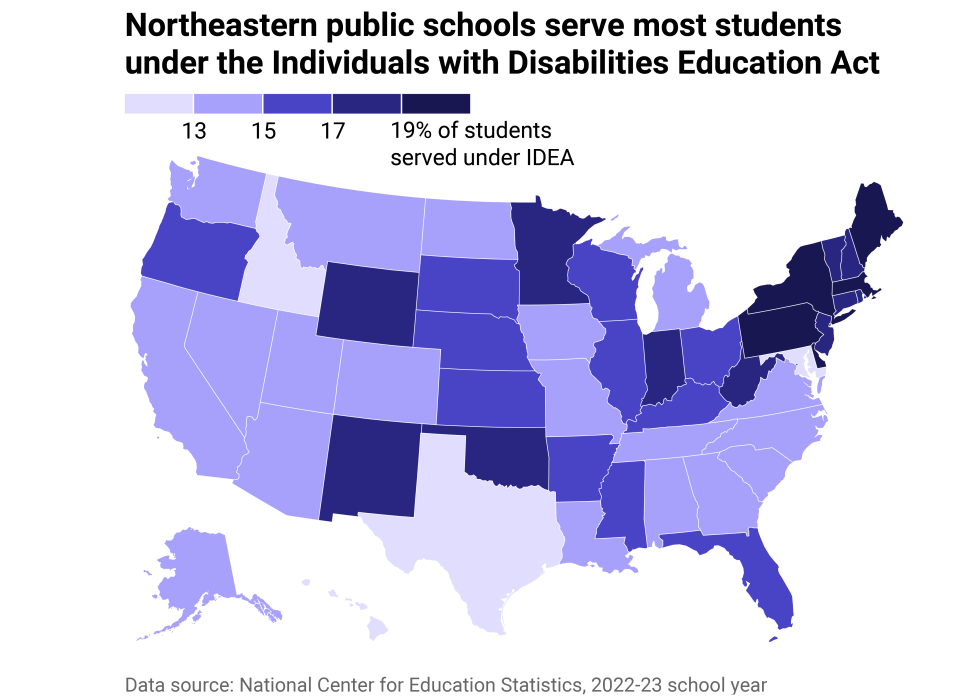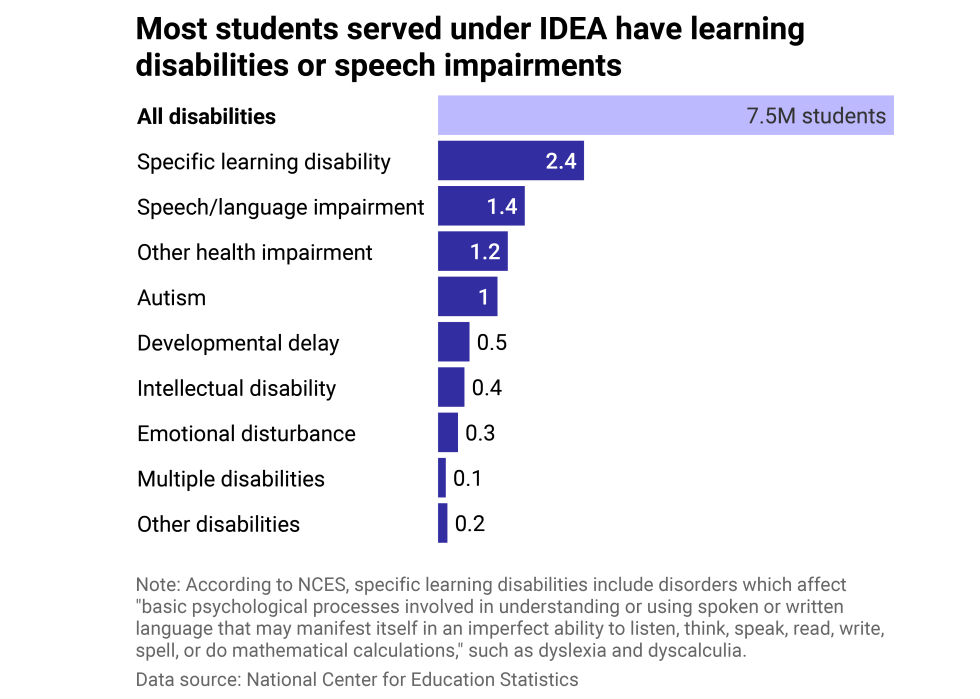
How enrollment of students with disabilities compares in Louisiana
This story originally appeared on accessiBe and was produced and distributed in partnership with Stacker Studio.
How enrollment of students with disabilities compares in Louisiana
When you're a kid, school seems inevitable, but for school-aged children with disabilities, that wasn't always a guarantee. For decades, many states legally refused to educate children with disabilities, often putting them in institutions where they rarely received education. Families rarely had other options or access to resources to provide for their children at home.
That changed in 1975 when Congress enacted the law known today as the Individuals with Disabilities Education Act. IDEA ensures that students ages 3 to 21 who have disabilities can have access to a free and appropriate public school education. The law covers a range of disabilities, the most common of which are learning disabilities and speech impairments.
Nationally, IDEA covers 7.5 million students, who make up 15.2% of the public school student population. The vast majority go to regular schools, with just 5% enrolled in specialized schools, private schools, or other types of programs, according to the Department of Education. Also, 2 in 3 students with disabilities spend 80% or more of their school day in general classes, a practice that would've been unthinkable pre-IDEA.
However, methods to identify students with learning disabilities are not universal, and some school districts may not be able to fully identify and support students with disabilities. A teacher shortage doesn't help—21% of public schools reported at least one teaching vacancy in special education roles in 2022-23.
Using data from the National Center for Education Statistics, AccessiBe examined how the 7.5 million students served under the Individuals with Disabilities Education Act can have drastically varied learning experiences in different school districts, based on a national analysis.
Read on to see how Louisiana compares to the rest of the country.

State-by-state breakdown
A Government Accountability Office report found differences in state eligibility criteria for receiving special education. Variability by state doesn't necessarily show differences in population, but differences in policies for qualifying students.
For example, Texas had a policy of capping the number of students with disabilities at 8.5% of the total school population, which limited the amount of services the state provided. The state abandoned this policy in 2018 when the federal government declared it illegal. Funding is still lagging—a 2022 Texas state commission report discovered that its school districts still need about $2 billion in special education funding to appropriately evaluate and serve its students.
Louisiana enrollment statistics- Public school students with disabilities, 2022-23: 13.5% (#13 lowest nationally, 96.9K students)
- Growth from 1990-91: +4.2 percentage points

Students served under IDEA
Under IDEA, a student with a disability has an Individualized Education Program that lays out a plan for their education in the least restrictive environment. Some IEPs may include special classes, therapies, resources, and aides.
Funding issues can be a challenge for schools—while the federal government is supposed to cover 40% of IDEA-related costs, it rarely pays its share. In the 2020-2021 school year, states and school districts had to cover $23.6 billion in costs the federal government failed to provide, according to the National Education Association. Making up for the shortfall often comes at the expense of a school district's general education funding, which can have a detrimental effect on all students.
This story features data reporting by Emma Rubin, writing by Jill Jaracz, and is part of a series utilizing data automation across 50 states and Washington D.C.



